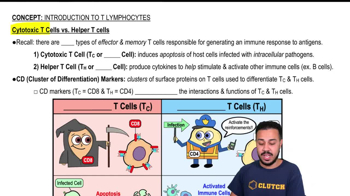Multiple Choice
Which of the following statements is characteristic of a secondary humoral response?
1452
views
 Verified step by step guidance
Verified step by step guidance Verified video answer for a similar problem:
Verified video answer for a similar problem:



 4:43m
4:43mMaster Classes of Antibodies with a bite sized video explanation from Bruce Bryan
Start learning